Interpreting Results and Diagnosing Problems
Last Modified: 2025-07-24 11:32:43.02
Software Version
HEC-WAT Version 1.1.0 was used to create this example. You can open the example WAT study with HEC-WAT Version 1.1.0 or a newer version.
Download Initial Project File:
Purpose
Once a Project Delivery Team (PDT) has built an HEC-WAT watershed (study) for a specific study region there are many aspects of that model that need to be reviewed.
As we have learned in this class HEC-WAT is very versatile and can be used in many ways to accomplish any objective. Due to the substantial output volume of many studies it can be very arduous to transfer a complete set of results for every event, so it is very possible that reviewers of the model may not be provided detailed outputs. This means model review and interpretation of results is a complex task that requires care and caution - and often coordination between the reviewer and the modelers who worked on the study. This workshop consists of two parts - first reviewing a HEC-WAT model using HEC-RAS to look at levee failures on the Sacramento River, investigating the model behavior without running the model. The second half involves fixing errors on a Russian River watershed using HEC-HMS and HEC-ResSim by reading the HEC-WAT compute dialog's error messages and investigating the cause of each.
Part 1 – Open the HEC-WAT Study
Open the HEC- Open the study: AEP_Testing_5.0.5.sty.
Hydrologic Sampler, Fragility Curve, and RAS - note that Hydrologic Sampler is a special "event generator" plugin, and is not included in the Program Order, but selected in the box above the list of other models.
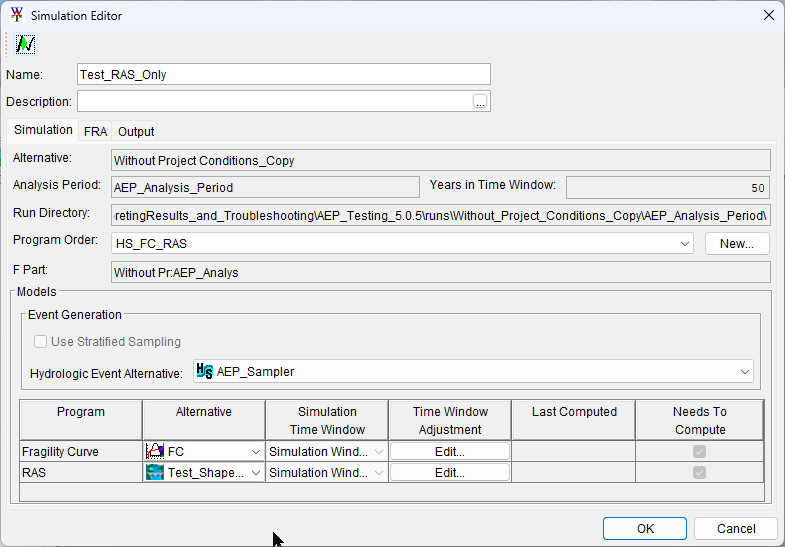
113
Open the Hydrologic Sampler alternative "AEP_Sampler" used by the simulation to examine the frequency curve and uncertainty method used.
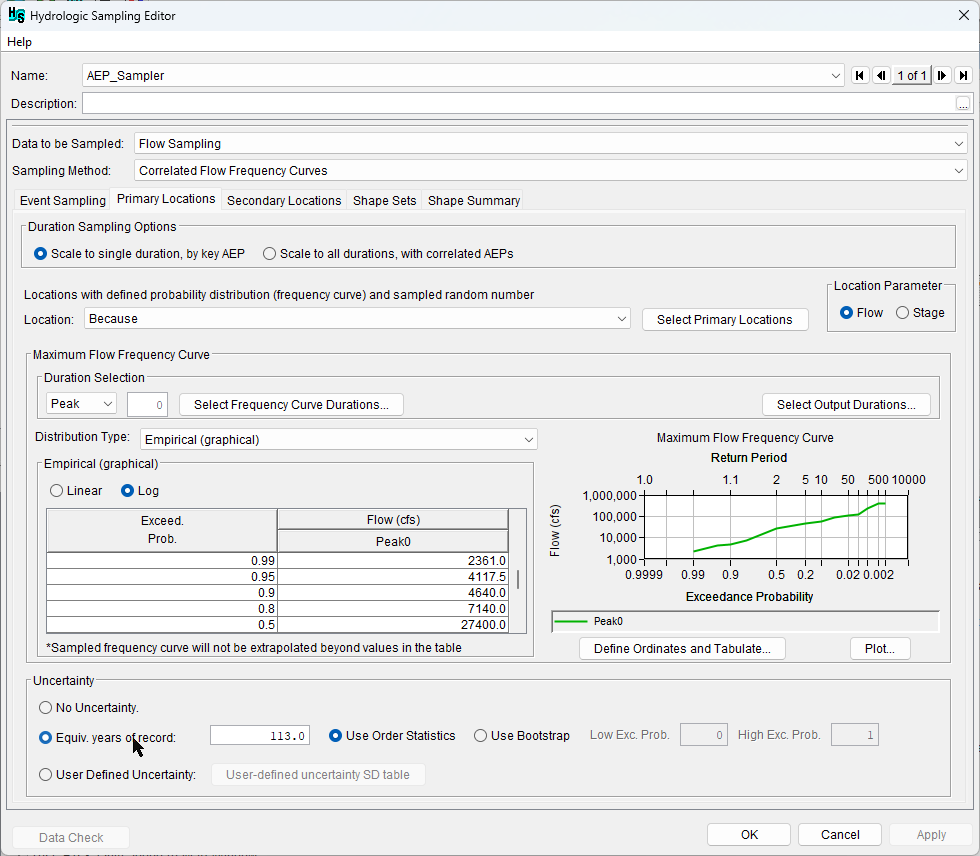
Yes, if the Flow sampled by the Hydrologic Sampler is greater than or equal to 30,000 then HEC-WAT will skip the Fragility Curve and RAS.
Open the Model Skip Rules Editor for the simulation, and look at the skip rule assigned to run before the Model Alternative "FC"
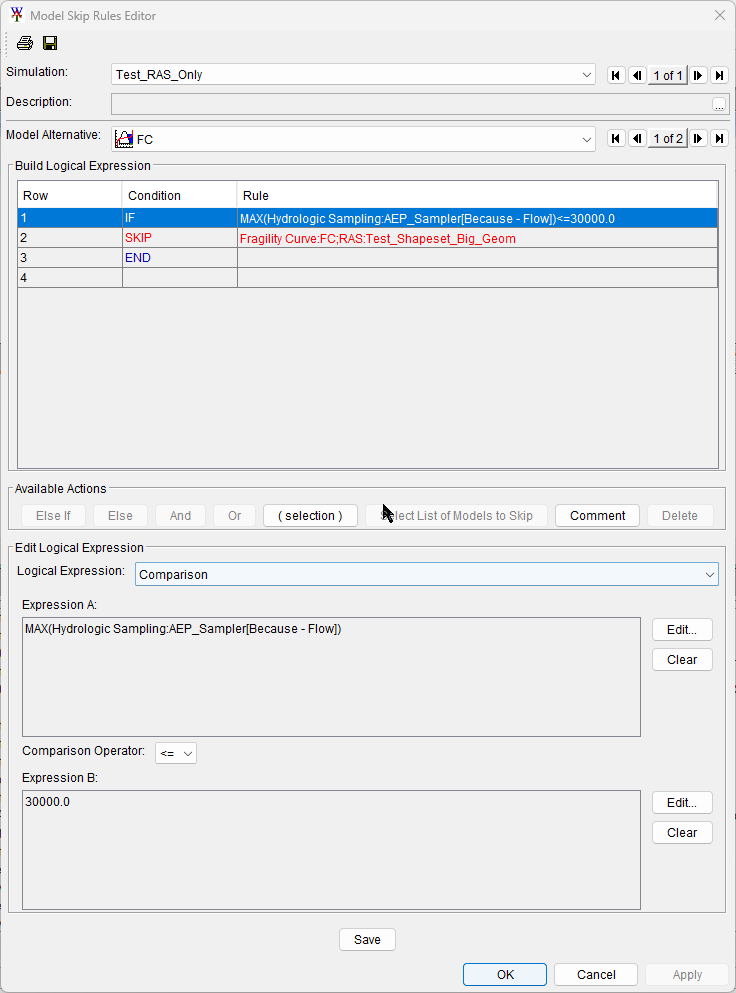
Yes, there are six output variables - 2 from HS (Peak flow and Avg. 3 day max) and 4 from FC (2 max breach elevations and 2 breach elevations)

But why are there no output variables from the HEC-RAS model? (That's a good question, and I'd like to hear your thoughts.)
115,827 cfs in event 40.
Given that this model did not have "save model folders" turned on and recomputed, it is difficult to review the results inside of HEC-WAT. For this question, we'll open the simulation DSS file and select the "EVENT-FLOW" record for this location, and the "EVENT-ELEV" record for the next question.
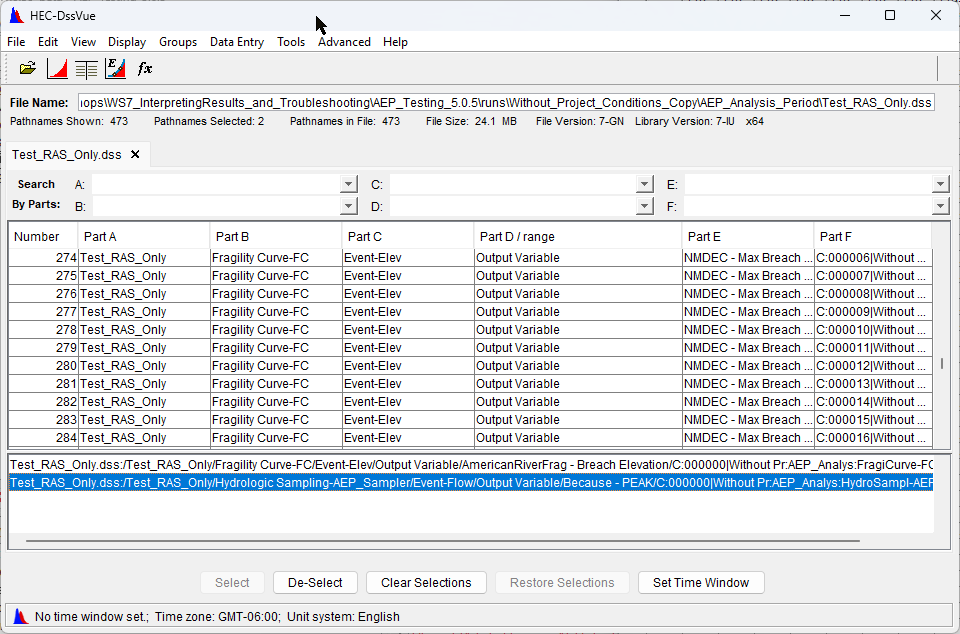
Clicking on the column for hydrologic sampler flows from Lifecycle 1, we can sort all the data by this column.

44.124 ft from the columns for the fragility curve sampler output.
Note that the fragility curve output variables are blank for some events. Why is that? Think about the skip rules that were used, and look back at the corresponding output variable values from Hydrologic Sampler for the events with blank cells.
Option 1: Look at the peak stage output variable for the cross-section that matches the break location, or the cross section's stage hydrograph record in the lifecycle DSS file
Option 2: By selecting the results from lifecycle 1, event 40 in the HEC-WAT results menu and compare the peak stage with the elevation sampled. However, in order to view the results in the HEC-WAT user interface, you would need to run the model again with "save model folders" turned on. Checking the lifecycle DSS file,
Part 2 – Fix the model
Close HEC-WAT. Launch HEC-WAT and open the study: “C:\Class\Workshops\NWO_Workshop_3.5\RussianRiver_updated\RussianRiver_updated.sty”
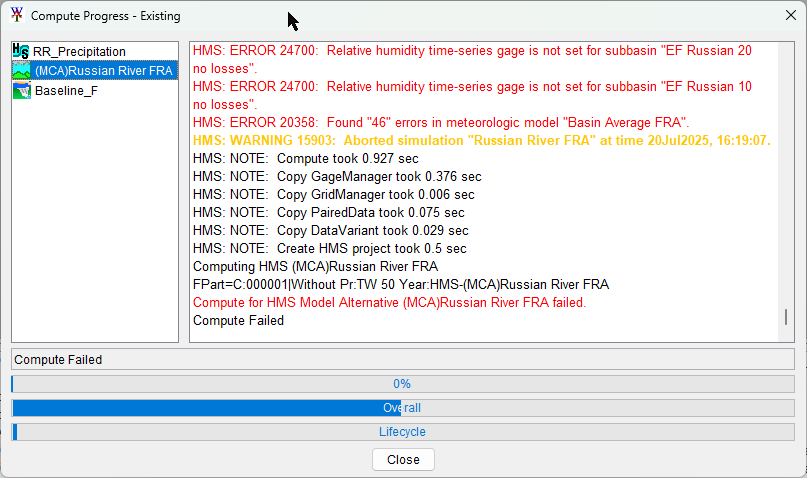
Find the issue(s) and fix it (them).
- Check the name of the Hydrologic Sampler alternative used against the alternative available in this watershed - in an older version of the workshop, these did not match. If they are different, you'll need to edit the simulation to replace hydrologic sampler alternative, changing from "RR Precip" which no longer exists, to "RR Precipitation". If so, recompute the model, you'll get the error above.
- Identify missing time series in the Model Linking Editor for the HEC-HMS model
 Use "default model to link" to ensure every precipitation record is linked to the correct sub-basin's hyetograph for parameter "PRECIP-INC"
Use "default model to link" to ensure every precipitation record is linked to the correct sub-basin's hyetograph for parameter "PRECIP-INC"- Remove the humidity inputs required by opening HEC-HMS and changing the dewpoint data from "Specified Humidograph" to another appropriate method. For the point of this exercise, we'll change it to "--None–" but ideally it would be replaced with a method derrived from temperature.

- Fix the model linking for HEC-ResSim:
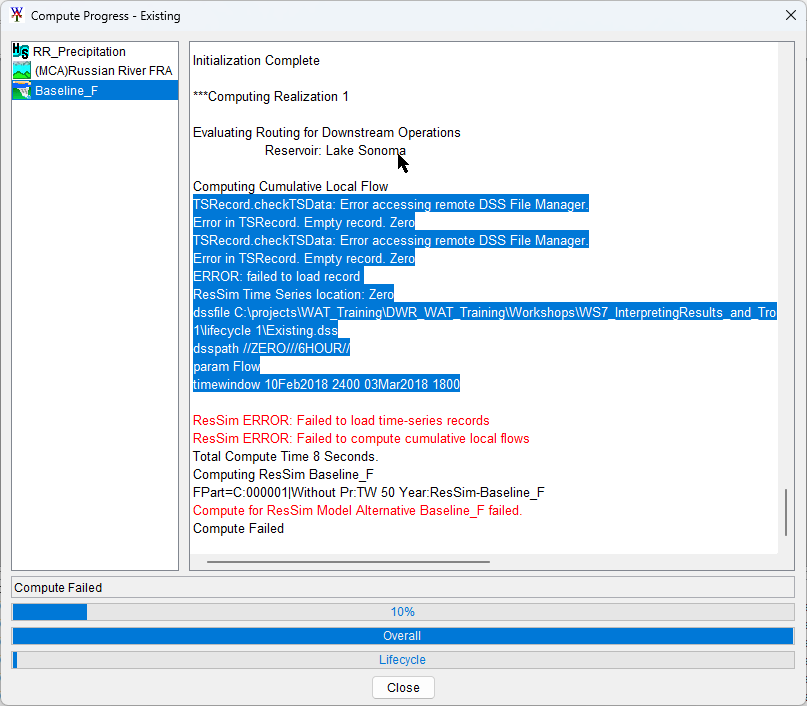
- We can either replace this missing record for "Zero" with a timeseries in the DSS file that exists for the extent of the FRA compute's analysis period, or we use an inflow multiplier to ensure that zero flow reaches ResSim. Instead of creating a zero timeseries record to use, we'll use the inflow multiplier approach here. First change the record in the model linking editor. Then open the ResSim alternative editor to put an inflow multiplier of zero at that location.
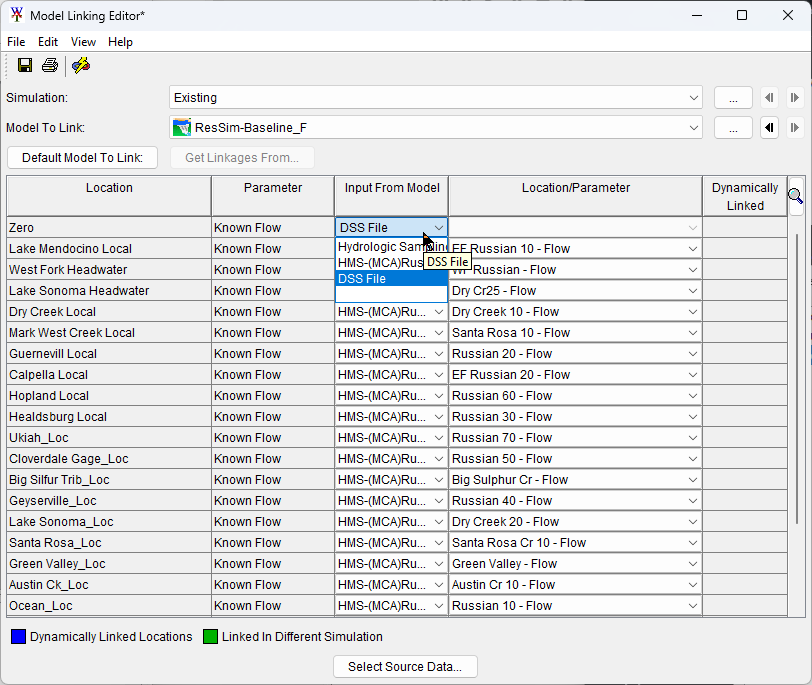


- Fixing these two issues and recomputing the model should result in a functional compute. Just because the model computes does not mean the results are now correct. While outside the scope of this exercise, it is important to now review the model results for correctness.
Part 3 – Accomplish an objective.
Go to any workshop that we have done this week conduct an alternative analysis. Change something in a model that you think will have an impact on the model result and run enough events to determine if there was a change in the model result. What did you learn from this part?